Trying to keep up with hybrid work statistics?
Rightly so. Understanding different hybrid work models, hybrid work productivity, and employee preferences can help you decide if it’s a good fit for your business and see how you compare to others.
But there’s a problem. There are tons of resources online offering hybrid workplace statistics, research, and hybrid work trends. In fact, if you search “hybrid work statistics” on Google alone, you’ll get about 222 million results in just 33 seconds. However, be careful — many of these hybrid work stats are outdated, some even from before the pandemic. Since the workplace has changed so much recently, these old hybrid work numbers aren’t very relevant anymore.
With that in mind, here are the latest stats on hybrid workplaces and what they could mean for your business.
Guide to hybrid work statistics
Key hybrid work statistics
- About 64% of leaders report that their companies use a hybrid model. Larger organizations, in particular, are more likely to adopt remote work models. This is often because they need a wide range of specialized skills and must recruit from a broader geographic area.
- 75% of leaders expect to change their work models soon. Most leaders think their company’s setup will keep evolving. Already, 95% have made offices more flexible, and 82% plan to continue improving them.
- 84% of employees say they’re more productive outside the office. People feel they get more done when they can work from home or choose where they work. Many say it helps them focus better.
- 66% of employers say hybrid work boosts productivity. Companies agree that hybrid work helps people perform better, feel better (65%), and it even helps cut costs (65%).
- 37% of U.S. job seekers want fully remote roles. Many people still want to work from home full-time. While 60% prefer hybrid, more than one-third would choose remote-only if they could.
- Only 11% of employees helped shape hybrid policies. Most workers weren’t asked how often they want to go to the office. But when they are, they’re usually happier and more productive.
- 69% of companies say hybrid work improved retention. Letting people work flexibly helps companies keep their staff. The biggest boost in retention comes when people only have to go in once a week.
- 87% of employees say good technology is key. Most workers say having the right tech makes hybrid work smoother. This number is up from 83% last year, so expectations are growing.
- Just 32% of companies invest in top collaboration tools. Even though great tools are important, only about one in three companies are actually spending on them. This can make hybrid work harder.
- 40% of office meetings now include remote participants. Most meetings now include someone joining from home or another location. That’s why easy-to-use meeting tools are more important than ever.
- 91% of workers say the right perks could bring them back to the office. People are open to coming in, but only if there’s a good reason. Higher pay, better tech, and less commuting are some of the top reasons.
- 85% of employers still dedicate most office space to individual desks. Even though people go to the office mainly to collaborate, most workspaces are still set up for solo work. That’s something many companies are now rethinking.
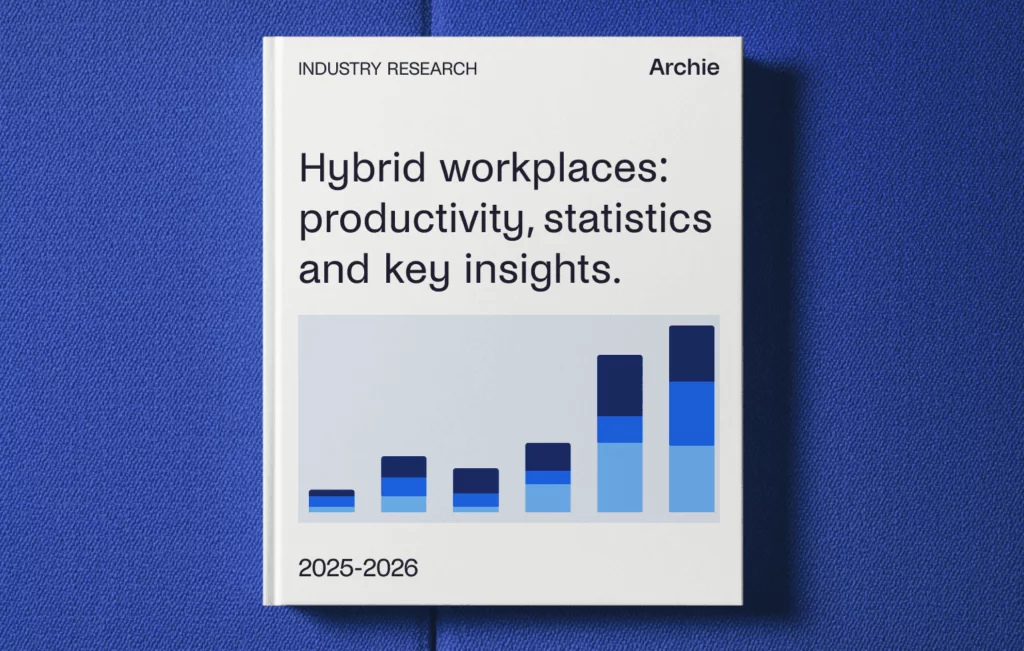
Understanding the hybrid work model & statistics
The hybrid work model is a flexible working method that blends remote and office work. Essentially, it lets employees choose where they feel they work best — some prefer home, others prefer the office, and many prefer a combination of both. This approach is attractive for its flexibility, but it also brings some challenges, such as fewer chances for spontaneous conversations that happen naturally in an office setting.
The hybrid work research highlights how important leadership is in making hybrid work effective. Leaders need to use transformative approaches, communicate well, and provide plenty of support to enhance team cooperation, employee engagement, and overall well-being. They must also adapt their leadership styles to manage remote teams successfully, promoting a culture of trust, inclusiveness, and responsibility.
So, this is where you, as a business leader, have to step in and carefully implement the best hybrid work schedule for your team.
Different hybrid work approaches to choose from
Despite what you might hear, there’s no major push to bring everyone back to the office or switch to fully remote work. Flex Index data shows that among large US companies with formal policies, a structured hybrid setup with set office days is now more common than fully remote or fully on-site. Three days in the office seems to be the most popular pattern in Fortune 100 firms.
Right now, workplaces are figuring out what works best for them, and hybrid models are pretty popular. About 64% of leaders say their companies use a hybrid approach.
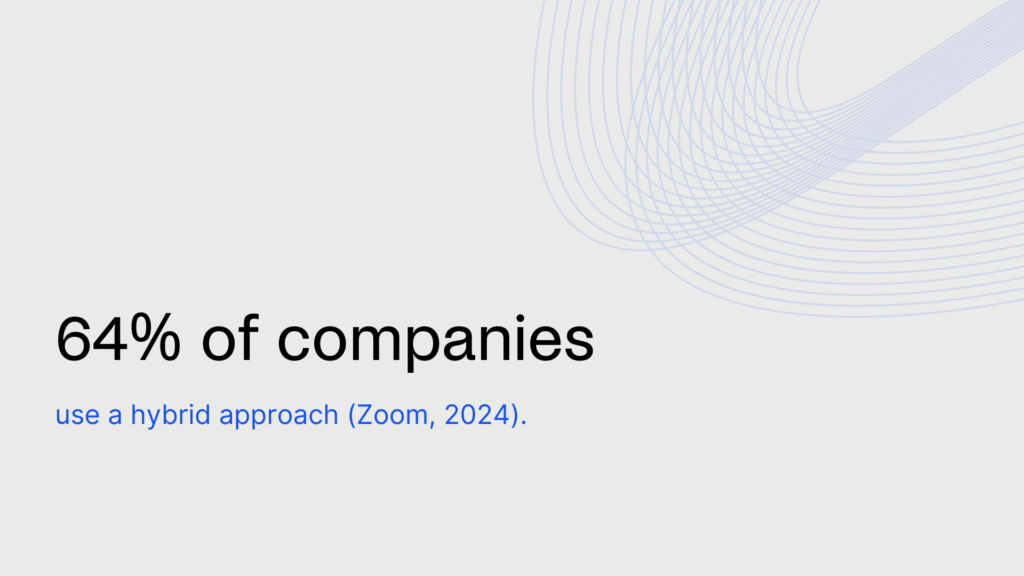
Every company is trying to figure out what hybrid work should look like, and the answer isn’t the same for everyone. Some businesses want people in the office most of the week, while others give more freedom to work from home. A survey conducted by Zoom identified six different types of hybrid work models used across the world:
- Scheduled Hybrid: Employees have specific days or times designated for remote or office work.
- Flextime Hybrid: Employees can choose their working hours but need to be in the office for certain meetings or collaborative sessions.
- Outcome-based Hybrid: Employees can work remotely if they meet certain performance goals or project deadlines.
- Rotational Hybrid: Different teams or departments alternate between remote and office work.
- Role-based Hybrid: Remote work options are available only to employees in specific roles, depending on job responsibilities.
- Location-based Hybrid: Employees in specific geographic regions or metropolitan areas can work remotely.
Hybrid policies also vary by industry. For example, 33% of employees around the world still have to be in the office five days a week, especially in healthcare (46%) and education (45%). In contrast, fields like tech and business services are more flexible — only 17% of employees there are required to be in the office full-time. Set-day hybrid models (like going in three days a week) are more common in education, retail, and government.
Oh, and here’s a fun fact: Tuesday, Wednesday, and Thursday are the most popular office days. People seem to prefer skipping the Monday rush and easing into the weekend a little early.
Making hybrid policies work
One thing that really makes a difference? Letting teams have a say in the plan. When employees feel included in deciding how often they come to the office, they’re more likely to feel good about it. It helps them stay motivated, productive, and happy. But right now, only 11% of workers say their team was part of that conversation…
And when companies roll out new office rules without asking for input, frustration builds. More than half of employees say they’ve felt pressured to join in complaining about their office policy. And most (68%) believe these complaints are fair. Still, just 36% of workers say their company explained the RTO policy clearly. This shows how important open, honest communication is. When employees feel ignored or micromanaged, even well-meaning policies can backfire.
Global adoption rates for hybrid work
No matter the exact model, the workplace is still changing and becoming more flexible. 75% of leaders think their companies will change their work models in the next two years. 95% have made their workspaces more flexible recently, and 82% plan to keep making them even more adaptable.
This makes sense in today’s competitive landscape. To attract and retain top talent, companies need to embrace hybrid work models and remain open to experimenting with different setups. However, preferences for hybrid work vary widely across the world. North American workers tend to favor being in the office more, while Western Europe leans strongly toward hybrid work, and Asia-Pacific (APAC) sees higher levels of remote work adoption. These regional differences are shaped by cultural norms, labor laws, and industry practices, making hybrid work a global trend, but not a one-size-fits-all solution.
Which brings us to the next point:
Statistics on hybrid work employee preferences
Employee preferences show a strong desire for flexibility in the workplace. In Owl Labs’ 2025 survey, people still care most about the basics: about 91% say pay is very important, and 89% say having a good manager and solid benefits (like health insurance and retirement plans) really matter.
But flexibility is now almost as important as those basics:
- 83% say flexible hours are important
- 82% say flexible working days are important
- 79% say flexible location is important
When people compare employers, things like flexible hours or a four-day week often matter more than office perks like free snacks or a games room.
Workers are also willing to give up some pay to get this flexibility. On average, they say they would trade about 9% of their salary for flexible hours, and around 8% for a four-day week, a flexible location, or more / unlimited vacation. Younger workers are the most willing to make that swap.
If they were to look for a new job, 36% of surveyed employees would choose a “work from anywhere” model, which is 11 percentage points more popular than the traditional in-office model. Flextime is particularly favored among various hybrid work options.
Interestingly, just being in an office doesn’t necessarily mean people feel more connected to their coworkers or managers. Actually, employees who work only in the office often report feeling less connected than those who work in hybrid or fully remote settings. It turns out that hybrid workers are the ones who are most likely to feel a strong connection to their company and colleagues.
However, businesses also need to consider the varying preferences of employees at different stages of their careers and their lives. Young professionals may be building networks and gaining experience, while older employees might be adjusting their work lives to fit changes in their personal lives. This means there is no perfect workplace model that fits everyone, so organizations must design workplaces that can adapt to these diverse needs.
One more thing supports this view: Most employees (58%) expect their workplace preferences to change throughout their careers, compared to a smaller group (34%) who think their preferences will stay the same or are unsure. Life changes like family dynamics, a desire for better work-life balance as they age, and health issues are often named the main reasons behind their shift in work preferences. Interestingly, employees who work remotely or in hybrid settings are more open to changing their preferences in the future than those who work strictly in-person.
Hybrid work helps keep employees around
If your company hasn’t explored hybrid work yet, now’s a great time to consider it. A report from Robert Half shows that most U.S. job seekers want flexibility: 37% want fully remote jobs, and 60% prefer a mix of home and office. And when it comes to switching jobs, 31% of professionals say more flexibility is what they’re looking for.
But hybrid work doesn’t just attract new talent, it also helps you keep the people you already have. In fact, 38% of workers who aren’t job hunting say they’re staying put because they love the flexibility they currently enjoy.
Cisco’s 2025 study backs this up. About 69% of employers said their employee retention improved after introducing hybrid policies. Companies that only asked people to come in once a week saw the biggest boost, with retention going up by 41% on average.
Employers get how important this is. 83% say remote work is key to keeping people happy and loyal. This sentiment is especially strong in places like Indonesia (93%), India (88%), and Switzerland (86%), though it’s a bit lower in Japan (68%) and Singapore (70%). These differences show how much local culture and work norms matter.
Hybrid work also helps companies stand out to new hires. Nearly three-quarters of employees (73%) said their workplace became more attractive thanks to flexible work policies, especially when the model was fully flexible. Younger workers care about this most: 66% of Gen Z said a company’s work setup was a key reason they took the job, compared to just 40% of Boomers.
How hybrid work affects mental health
Most people say remote or hybrid work has been good for their mental health. In fact, a FlexJobs survey found that 99% of professionals said working from home, either full-time or part-time, made them feel better. More than half said full-time remote work helped the most, while others preferred a mix. Only 1% thought going into the office every day was best for their mental well-being.
Working from home gives people more control over their day, cuts down on commuting stress, and helps them balance work and life. But it’s not all smooth sailing — burnout is still a problem.
A third of workers say they feel burned out, whether they work from home, in the office, or a bit of both. One reason is that working from home can blur the lines between work and personal time. Many remote workers find themselves working longer hours or checking in outside of work time. Some feel pressure to prove they’re working hard, which only adds more stress.
At the same time, in-office workers are more likely to say they feel focused and go above and beyond, maybe because being seen by managers helps them feel more recognized and motivated. Are they actually more productive, though?
Hybrid work productivity statistics
What do productivity statistics say about hybrid work? Many employees find they are more productive in a hybrid or remote setting. In fact, 84% say their productivity improves outside a traditional office, with the strongest results seen among younger workers. While this preference does dip a little with age, it’s still true across all generations.
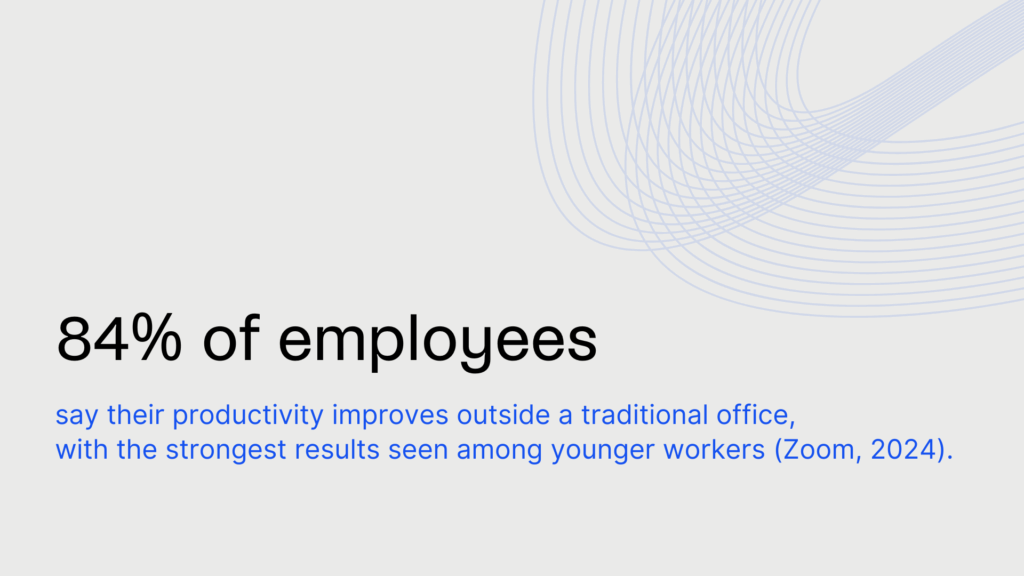
Managers are noticing changes, too. Owl Labs found that managers now rate their teams as 62% more productive in hybrid or remote setups, down from 79% last year. The drop doesn’t necessarily mean people are working less — it may reflect shifting expectations and new workplace challenges.
Employees themselves report consistently high productivity at around 90%, the same as last year, but they’re also feeling more pressure. Burnout (26%), unfair pay (22%), and declining mental health (17%) are the top reasons for disengagement.
Other studies back this up. Stanford research found that hybrid workers perform just as well as their fully in-office peers and are 33% less likely to quit. Microsoft’s Work Trend Index also highlights that when hybrid teams have clear goals, good communication, and the right tools, they can match or even surpass traditional office productivity.
Overall, while managers’ views have shifted slightly, the data suggests that location matters less than having the right support.
Other benefits of hybrid work
What are the advantages of hybrid work? Globally, two-thirds of employers recognize that hybrid working has positively impacted their employees’ productivity (66%) and well-being (65%), while also helping to save costs (65%). A smaller majority believe that hybrid working has improved team communications (56%), diversity and inclusion (54%), and workplace culture (51%).
Interestingly, different regions have varied perspectives on the benefits of hybrid working. Employers in Europe are generally less convinced about these positive impacts than their counterparts in the APAC region, which reports the highest positive impacts.
Still, when exploring why people feel optimistic about returning to the office, the top reasons given globally by both employers and employees include interacting and socializing with others (74%), collaborating (71%), brainstorming and coming up with new ideas (53%), and feeling a sense of belonging (46%). On the other hand, the main reasons employees prefer to work from home are the flexibility and comfort it offers and the view that being in the office isn’t necessary. And that’s precisely what makes hybrid work beneficial for everyone.
What employers (really) think about hybrid work
Most companies agree that hybrid work is helping. But there’s still a big disconnect between what employers expect and how employees feel.
For example, many employers think asking people to come into the office helps with performance. But only about 39% of employees agree. In fact, 77% of workers believe return-to-office (RTO) rules are based on a lack of trust, not real business needs, and even 81% of employers admit that’s part of it.
Experts suggest that instead of focusing on who shows up at the office, companies should measure results, like projects completed or goals achieved. Tools like OKRs (Objectives and Key Results) and good collaboration software can help track progress no matter where people work. The problem? While 90% of employees say they need great tech to work well, only about 1 in 3 companies are actually investing in it.
There’s also a gap in satisfaction. Around 90% of leaders say they’re happy with their current office policy, but only 81% of employees feel the same, and just 28% of workers say they’re very satisfied. Plus, over 75% of employers admit they’re still figuring out how to strike the right balance. It’s even harder when teams include people from different generations with different needs and work styles.
Collaboration in hybrid work environments
How do people get work done in a hybrid environment? For hybrid workers, the most common setup involves being in the office three to four days per week (34%), as reported by employers. Employers in Europe (26%) are less likely than those in APAC (38%) or the Americas (35%) to have most employees in the office five days a week.
As hybrid working becomes more common, employers have noticed that 40% of office interactions now involve remote participants. Meetings are crucial for most jobs, but they can be difficult to manage effectively when not everyone is in the same room.
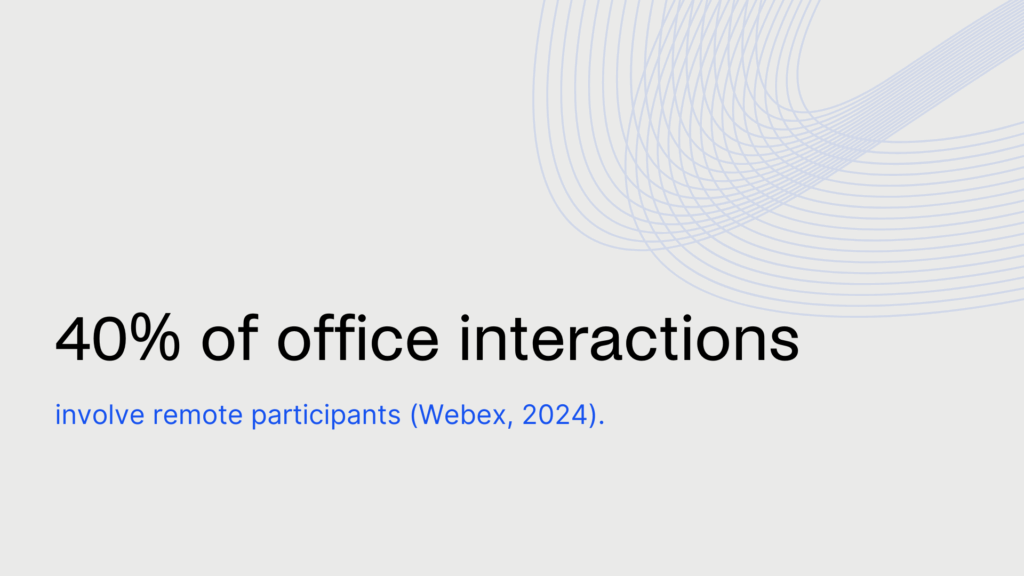
Common issues during meetings also include technical problems, difficulty seeing or hearing participants, and delays in starting meetings. Hybrid work has also spurred the work-from-anywhere movement, introducing challenges such as coordinating across different locations.
In fact, nearly one-third of all meetings now span multiple time zones, which is a 35% increase since 2021. This often means calls happen early in the morning or late in the evening to fit everyone’s schedules. Microsoft reports that meetings after 8:00 pm have increased by 16% year over year, and by 10:00 pm, nearly 29% of workers are still catching up on emails.
As a result, 87% of workers now say that good workplace technology is a crucial aspect of their job (up from 83% in 2023), and choosing the right flexible office tools is increasingly critical.
In response, employers are enhancing the remote and hybrid work experience by training employees and managers to improve workplace collaboration. In 2024, learning and development focused on conducting effective hybrid meetings (49% of employees reported this) and using varied communication methods (47%). Additionally, 47% of workers noted that their companies have increased the use of AI. Apart from investing in hybrid work software, taking care of the office space is also crucial.
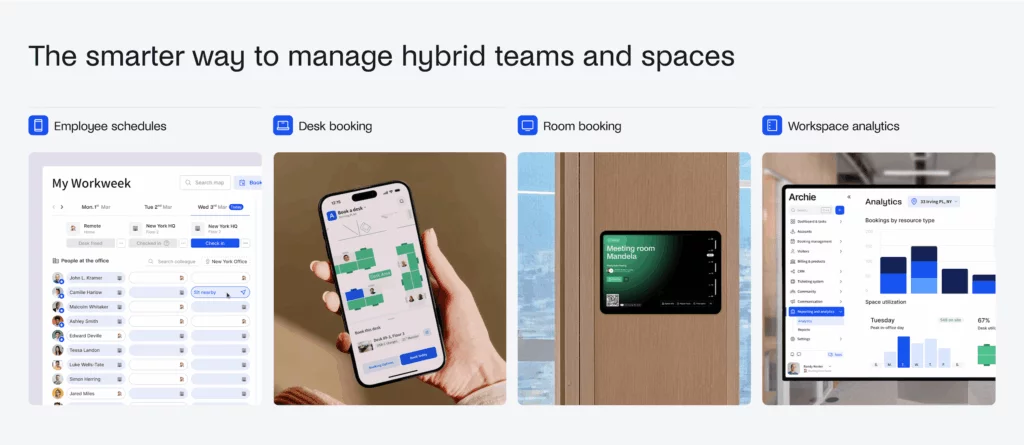
Statistics on hybrid work challenges
Many employees who work remotely or in a hybrid setup worry that being out of sight means being out of mind. They fear that if they’re not physically present in the office, their bosses and colleagues might see them as less dedicated or less involved in the company.
This concern isn’t just in their heads. Fully remote workers are 1.3 times more likely to feel insecure about their job compared to those who work in the office full-time. A big reason for this is lack of visibility. When you’re not regularly seen by leadership or coworkers, it’s easy to feel like you’re missing out on important conversations, networking opportunities, or even promotions.
To make sure remote and hybrid employees feel valued and included, many companies are taking action. One major step is training leaders on how to effectively manage hybrid teams. Instead of naturally gravitating toward in-office workers, managers are learning how to check in regularly with remote employees, ensure they’re engaged, and provide them with the same opportunities as their in-person colleagues.
Hybrid workplace management statistics
Making the office an appealing place to work has become increasingly difficult every year. The old perks like free beer and ping-pong tables are no longer enough.
Today, employees seek more substantial benefits and office spaces that help them excel at work. They aren’t against working from the office but need more or different incentives than before. In 2024, 91% of workers said they could be persuaded to come into the office if the right benefits were offered, a slight decrease from 94% in 2023.
41% of workers mentioned that higher pay would draw them back to the office. Other appealing factors included a shorter commute (28%), no dress code (23%), and better technology (18%). Office features like more privacy (23%) and additional meeting rooms (14%) were also strong motivators.
The issue is that less than half of employers (47%) and employees (42%) globally feel that their office spaces are well-equipped to support the evolving needs of hybrid work.
Employers and employees in Europe are particularly critical, with only 32% of employers and 37% of employees believing their office setups are adequately prepared. This sentiment stems from concerns that current office designs do not foster productivity, especially considering the changing ways offices are used.
Making the office work for hybrid teams
Over the past five years, many companies have reduced the size of their offices to save money. In fact, half of all organizations have downsized their real estate, especially in business services (61%) and finance (58%). Government offices made fewer cuts, with only 35% scaling back.
Why the shift? On one hand, 57% of employers say building and maintenance costs are a major reason for rethinking where and how work happens. On the other hand, 40% of employees worry about commuting costs, especially if they’re asked to come in regularly.
This balance is tricky. That’s why 48% of companies now require some in-office time, hoping to boost team productivity and workplace culture, while still keeping flexibility in mind.
But there’s more to it than just cutting space. Three-quarters of employers consider redesigning their office spaces within the next few years. Why? Because today’s employees, especially across different generations, expect more from the office. It’s no longer just a place to sit at a desk. The modern office needs to be flexible, adaptable, and worth the commute.
Although collaborating with colleagues is a key reason for coming to the office, 85% of employers report that most of their office space is dedicated to personal working areas. But globally, both employers and employees agree: the future office should support a mix of work styles and give people more control over how and where they work.
Stats on hybrid work technology
For hybrid work to run smoothly, companies need the right technology, and most people know it. A huge majority of both employers (93%) and employees (90%) say collaboration tools are essential for making hybrid work successful. That’s why many companies are planning to invest in tools like digital whiteboards and modern meeting room booking systems to make it easier for teams to work together, no matter where they are.
But there’s still a gap. Almost half of employees (49%) say the tools they use don’t work well across home and office, and 38% of companies admit their tech systems don’t always talk to each other properly. To truly support hybrid teams, companies need to close these gaps and make sure everything works seamlessly together.
Looking ahead, most people agree that tech will be at the heart of the future of work. Nearly 9 in 10 say that things like automation, AI, and good collaboration software will play a big role. This is especially true for younger leaders — 56% of Gen Z employers think digital tools are key to future work models, compared to only 34% of Boomers.
The problem? Only about 32% of companies are actually putting money into top-tier collaboration tools, and just 44% are investing in AI. That’s a big disconnect, especially when 90% of employees say these tools matter to their daily work. If companies don’t catch up, they risk falling behind.
How hybrid work is evolving
Hybrid work in 2025 is very different from the rushed setups of 2020. Most companies now have proper policies, people know what to expect, and the conversation has shifted from “Can we do hybrid?” to “What kind of hybrid actually works for us?”
A few big shifts stand out:
Hybrid creep and return-to-office pressure
Hybrid is still common, but it is getting more structured and a bit stricter over time.
In many US companies with formal policies, the average required office time has climbed to just under three days per week, up from around two and a half days a year earlier. Three days in the office has quietly become the “standard” for structured hybrid, and a growing minority of firms are now pushing for four office days.
You see a similar pattern in the UK. According to CIPD, among organizations that allow hybrid working, about 65% now set a minimum number of days in the office, usually two or three days a week. On top of that, around 14% of these employers say they plan to introduce or increase mandatory office days in the next year. In other words, the dial is still turning slowly in favour of more time on site.
Employees notice this. Among US workers with remote-capable jobs who are not fully remote, about three-quarters now say their employer requires them to be on site a set number of days each week or month. That is up from just over six in ten in early 2023.
So hybrid has not disappeared, but it has changed shape. The early “work wherever, just get it done” phase is fading. What we have now is hybrid work with more rules: fixed anchor days, minimum office time, and clearer expectations around when people will be together.
From “where” to “when”
The second big shift is that flexibility is no longer only about where you work. It is increasingly about when you work and how you organize your day.
Owl Labs’ data shows this nicely. Around 59% of workers say they schedule personal appointments during traditional working hours, and many say they regularly take up to an hour a day for personal tasks like childcare, errands or health appointments. People are using flexibility to smooth out real life, not just to avoid commuting.
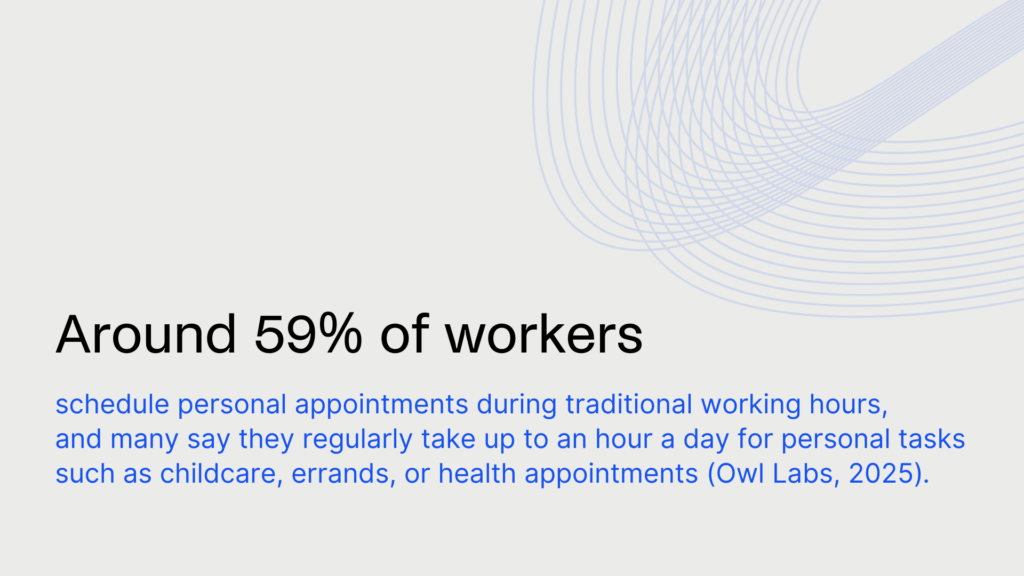
There is also growing interest in “microshifting” the workday. About 65% of employees say they like the idea of working in short, non-linear blocks that fit around things like school runs, energy levels, or rush-hour traffic. Managers and caregivers are especially keen on this pattern because it gives them more realistic ways to juggle responsibilities.
Meeting habits are shifting, too. Most employees feel that meetings before 8:00 a.m. are too early and meetings after 4:00 p.m. are too late. That tells you something simple: people want flexible days, but they do not want their workday stretching from dawn to night just because they can log in from anywhere.
Underneath all of this, you find familiar tools and habits: calendar blocking, no-meeting windows, protected focus time, split shifts. Together, they show that the real “future of hybrid” is not just swapping locations. It is people quietly redesigning their days so work and life fit together in a more sustainable way.
Unequal access: who actually gets hybrid?
The third shift is about fairness. Toptal’s November 2025 report shows that companies are posting fewer full-time remote jobs but still paying well for senior hires, while quickly increasing part-time and project-style remote and hybrid roles. The story here is not “remote is over.” It is that remote work is becoming more flexible and more fractional at the experienced end of the market.
Robert Half’s job posting data adds another layer. Hybrid and remote roles are much more common in high-skill, desk-based fields like technology, finance, marketing, legal, and HR. In contrast, many healthcare roles, admin support jobs, and frontline positions still show up mainly as fully on-site. In some of these categories, 80% or more of new jobs are still advertised as office-only or location-only.
There are also substantial differences across countries and regions. Hybrid and remote work are much more common in Northern and Western Europe, in some US states, and in big metro areas like San Francisco, Boston, and New York. Rural areas and manufacturing-heavy regions tend to have fewer remote options, simply because there are more hands-on jobs and less knowledge work.
Seniority plays a role, too. UK research from CIPD shows that many employees feel flexible working is easier to get if you are senior or in a professional role. Junior staff and frontline workers in the same organization often feel they have fewer options, even when some flexibility in hours or location might technically be possible.
All of this adds up to a “flexibility divide”. The biggest benefits of hybrid work include better work-life balance, shorter or fewer commutes, more control over the day, and a reduced risk of staying concentrated in already advantaged groups: knowledge workers, city-based staff, and senior people.
For employers and policymakers, that is the next big challenge. The question is no longer “Should we offer hybrid?” but “How do we extend fair, role-appropriate flexibility beyond office workers, so it does not become just another form of inequality at work?”
Future hybrid work trends
The stats on hybrid workplaces are clear: They are not just a temporary trend but becoming the standard way to work. Even in the U.S., where many company leaders used to push for a full return to the office, attitudes are shifting. A KPMG study found that now only 34% of CEOs expect a full return to the office within the next three years, meaning hybrid work is becoming a long-term reality.
Leaders should see hybrid work as an essential part of today’s workplace. But to benefit from hybrid work, you need to do more than just announce a hybrid work policy. You must invest in training, provide the right technology and resources, and create a supportive work environment that values everyone equally. You also need to handle common challenges of remote work, like keeping everyone communicating well, working together as a team, and balancing work with personal life.
Although it’s quite a lot of work, there’s a silver lining: By adopting hybrid work models and using effective leadership strategies, you can create inclusive, adaptable, and strong work environments. These environments help employees do their best in a constantly changing business world.
A summary of the most recent hybrid work stats
Here are all the hybrid work statistics mentioned in the article:
🏢 Hybrid work adoption & models
- 64% of leaders say their company uses a hybrid model.
- 75% of leaders think their company’s work model will change in the next 2 years.
- 95% of companies have already made their workspaces more flexible.
- 82% of companies plan to keep increasing workplace flexibility.
- 33% of employees globally still have to work in the office five days a week — highest in healthcare (46%) and education (45%), lowest in business services (17%) and tech (17%).
- Set-day hybrid models are most common in education, retail, and government.
- Tuesday, Wednesday, and Thursday are the most popular in-office days.
- Only 11% of employees say their team had input in setting hybrid policies.
👤 Employee preferences
- 36% of employees would choose a “work from anywhere” model when job hunting.
- 64% would still accept a job that doesn’t offer hybrid work.
- 58% expect their work preferences to change over time; 34% think they’ll stay the same or are unsure.
- 37% of U.S. job seekers want fully remote roles.
- 60% of U.S. job seekers prefer hybrid.
- 31% of professionals want more flexibility when changing jobs.
- 38% of non-job-seeking employees say they stay because of flexible work options.
- Hybrid workers are more likely to feel connected to their colleagues than fully in-office staff.
🧠 Mental health & burnout
- 99% of professionals say hybrid/remote work helps mental health.
- 56% say full-time remote work helps most.
- 43% say hybrid is best for mental health.
- Only 1% say full-time in-office is ideal for mental well-being.
- Burnout reported by: 36% of remote workers, 35% of in-office, 28% of hybrid workers.
- In-office employees are more likely to say they stay focused and exceed expectations — possibly due to visibility to managers.
📈 Productivity & performance
- 84% of employees say they’re more productive in hybrid/remote settings.
- Managers report 62% productivity in 2024 vs. 79% in 2023.
- 90% of employees say they’re just as or more productive in hybrid work.
- 26% cite burnout as the top reason for disengagement.
- 22% mention unfair pay, and 17% mention declining mental health.
- 66% of employers say hybrid boosts productivity.
- 65% say it improves well-being and reduces costs.
- 56% say it improves team communication.
- 54% say it improves diversity and inclusion.
- 51% say it enhances workplace culture.
🛠️ Technology & collaboration
- 93% of employers and 90% of employees say collaboration tools are essential for hybrid work.
- 87% of employees say good technology is crucial (up from 83% in 2023).
- 49% say their tools don’t work seamlessly across locations.
- 38% of companies say their platforms don’t integrate well.
- Only 32% of employers are investing in high-end collaboration tech.
- Only 44% are investing in AI tools.
- 56% of Gen Z leaders say digital tools are essential to the future of work, compared to 34% of Boomers.
- 40% of office interactions involve remote participants.
- 49% of employees received training on hybrid meetings.
- 47% received training on communication methods.
- 47% say their company has increased AI use.
💼 Leadership & management
- 39% of employees believe mandatory office days help productivity.
- 77% of employees say RTO rules stem from lack of trust.
- 81% of employers agree that mistrust plays a role in RTO policies.
- 90% of leaders say they’re satisfied with their hybrid policy.
- Only 81% of employees agree; just 28% are “very satisfied.”
- 76% of employers say they still struggle to strike the right hybrid balance.
- 83% say managing multiple generations adds to the challenge.
- 51% of employees say they’ve felt pressured to criticize office policies.
- 68% say those complaints are fair.
- Only 36% say their RTO policies were clearly explained.
🌍 Global & regional insights
- North America favors in-office setups.
- Western Europe prefers hybrid.
- Asia-Pacific leans more remote.
- Remote work is most valued in Indonesia (93%), India (88%), and Switzerland (86%).
- Lower importance placed on remote work in Japan (68%) and Singapore (70%).
🏢 Office space & real estate
- 50% of organizations reduced office space in the last 5 years.
- Downsizing is highest in business services (61%) and finance (58%) and lowest in government (35%).
- 57% of employers cite building/maintenance costs as a major decision factor.
- 40% of employees cite commuting costs as a concern.
- 48% of companies require some in-office time.
- 75% of employers plan to redesign their office spaces.
- 85% of office space is still dedicated to individual desks.
- Only 47% of employers and 42% of employees believe their offices are well-equipped for hybrid work.
- In Europe, just 32% of employers and 37% of employees say the same.
🔮 Future outlook & trends
- 34% of U.S. CEOs expect a full return to the office in the next 3 years.
- Hybrid work is becoming a long-term norm, not a temporary fix.
- Success depends on investing in tech, training, inclusive policies, and adaptable leadership.
Sources
- Zoom, Navigating the Future of Work: Global Perspectives on Hybrid Models and Technology
- Cisco, Global Hybrid Work Study 2025: Navigating Hybrid Work Strategies in the Evolving Workplaces
- Owl Labs, 8th Annual State of Hybrid Work
- Stanford University, Hybrid Work Is a Win-Win-Win for Companies and Workers
- Microsoft & LinkedIn, 2024 Work Trend Index Annual Report
- Webex/Cisco, The State of Hybrid Work, Global 2024
- The ADP Research Institute, People at Work 2024: A Global Workforce View
- Gallup, Hybrid Work Report
- KPMG, U.S. CEO Outlook Pulse Survey 2024
- Robert Half, Demand for Skilled Talent Report
- FlexJobs, State of the Workforce Report
- McKinsey, Returning to the office? Focus more on practices and less on the policy
- Flex Index, Flex Report Q3 2025 Hybrid and Remote Work by the Numbers
- Owl Labs, State of Hybrid Work 2025
- CIPD, Flexible and hybrid working practices in 2025
- Pew Research Center, Many remote workers say they’d be likely to leave their job if they could no longer work from home
- Robert Half, Remote Work Statistics and Trends for 2025
- Toptal, High-skilled Job Report for November 2025

Berenika Teter
Archie's Content Manager, fueled by filter coffee and a love for remote work. When she’s not writing about coworking spaces and hybrid workplaces, you can probably find her exploring one.
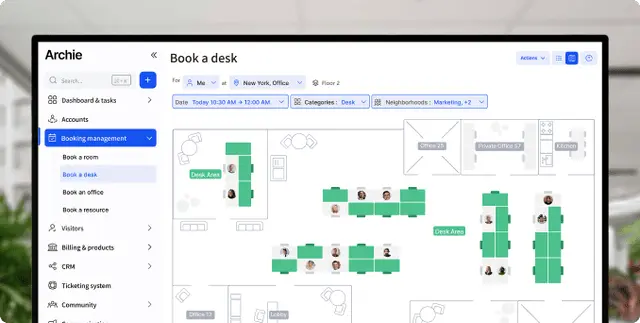
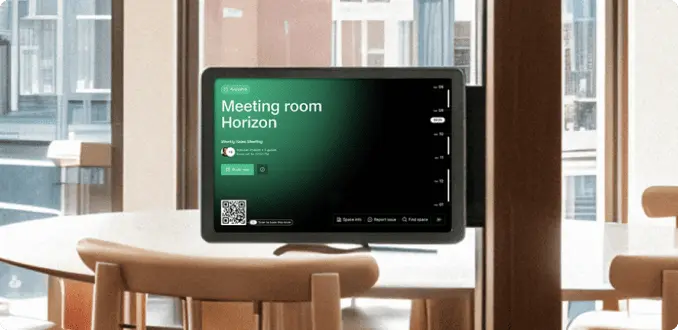

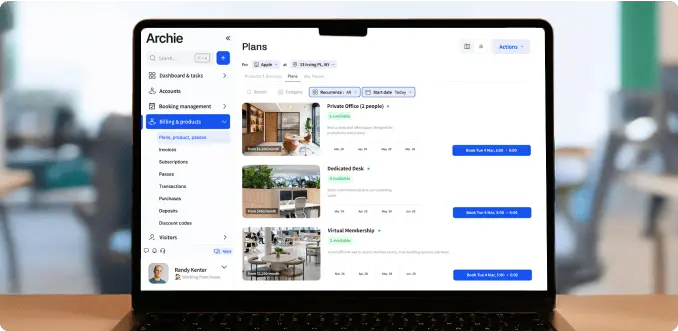

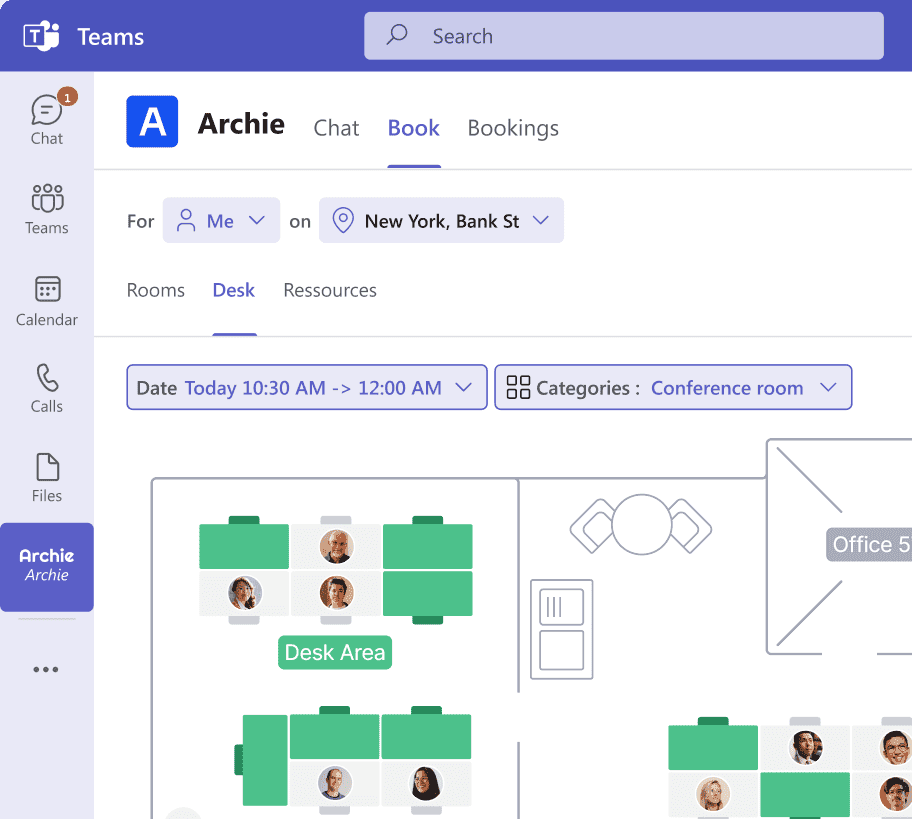
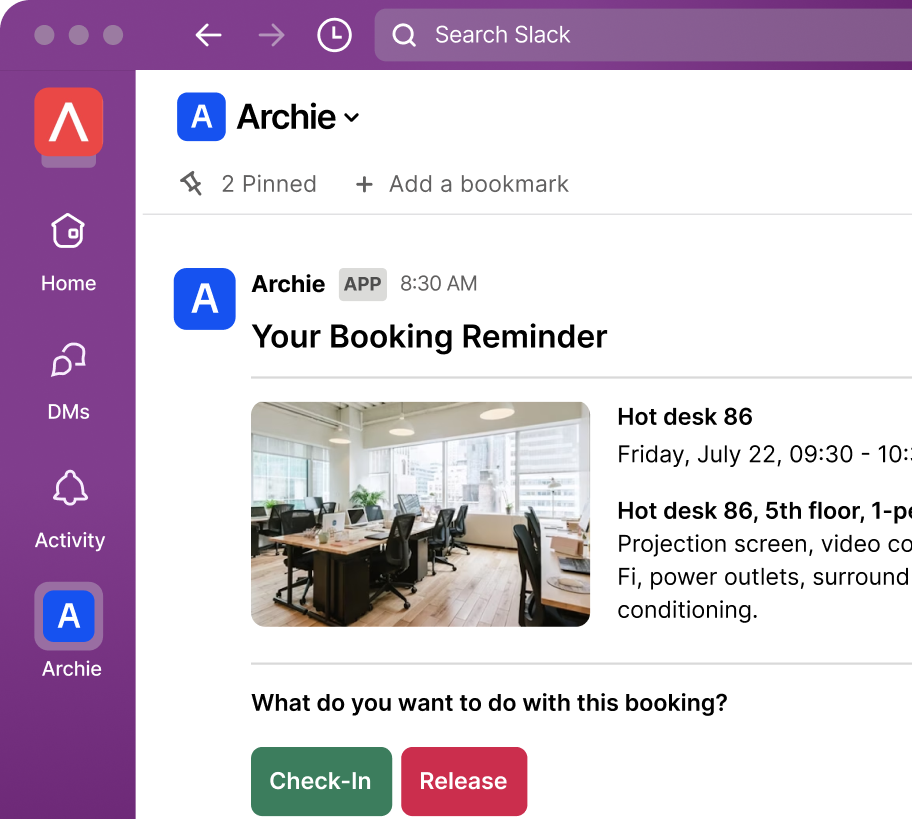
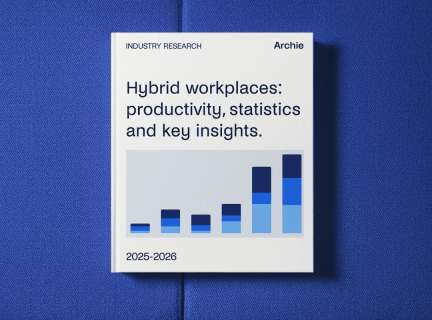

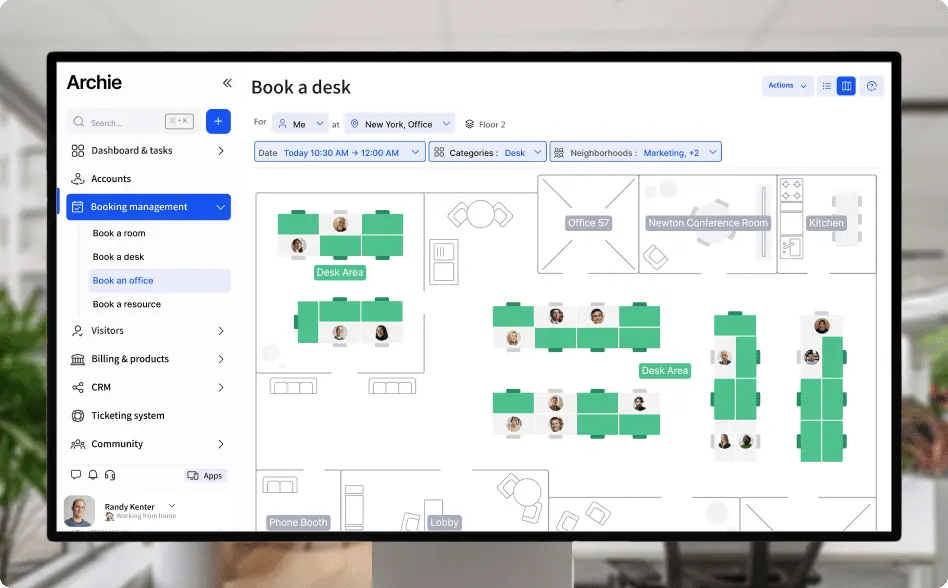
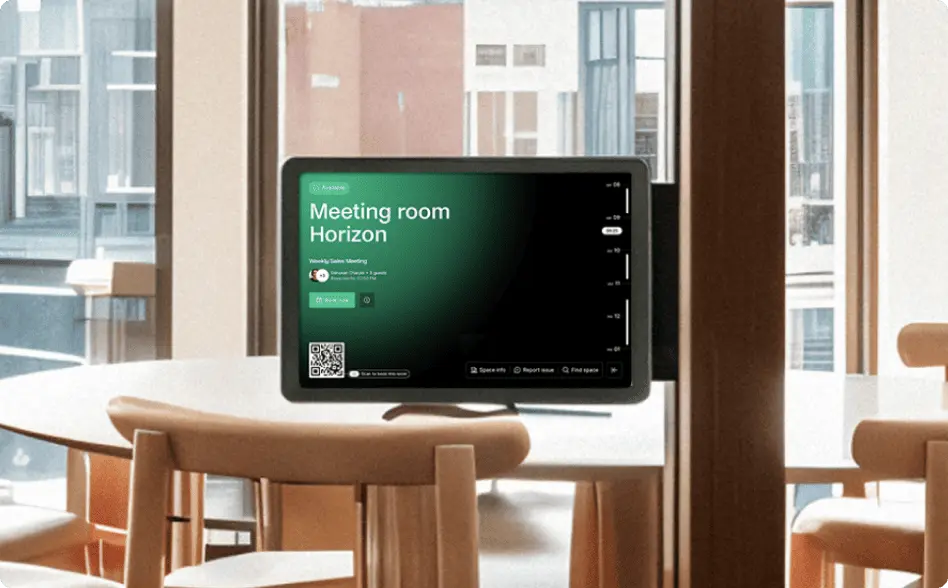
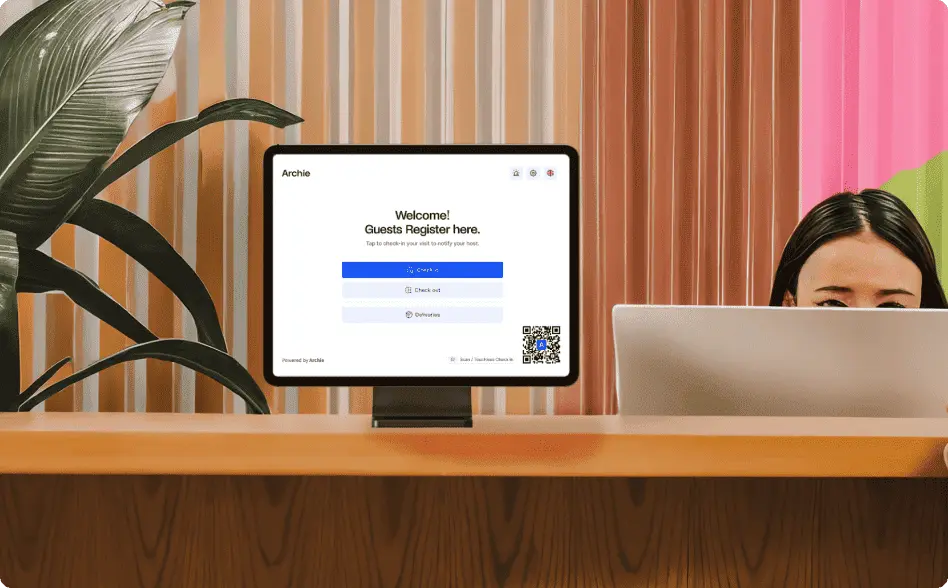
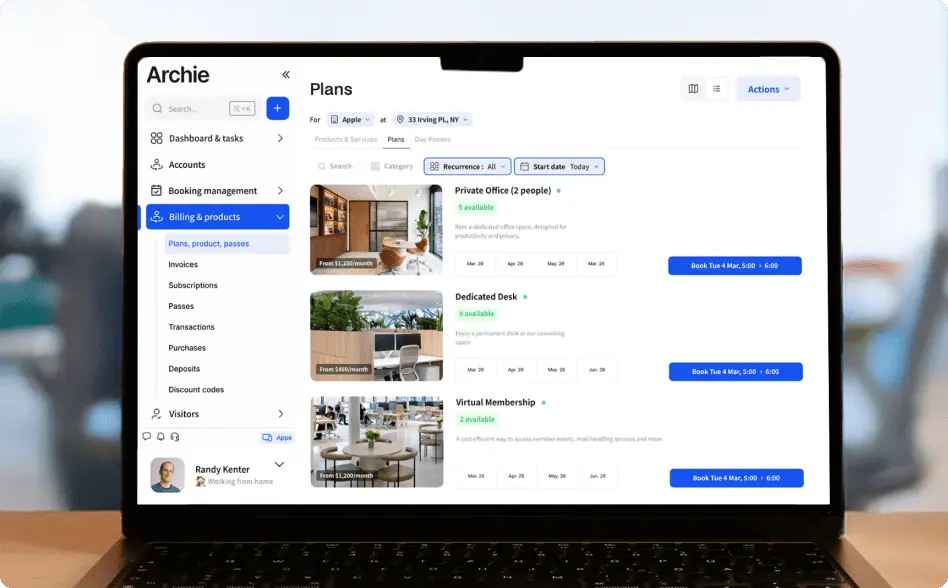


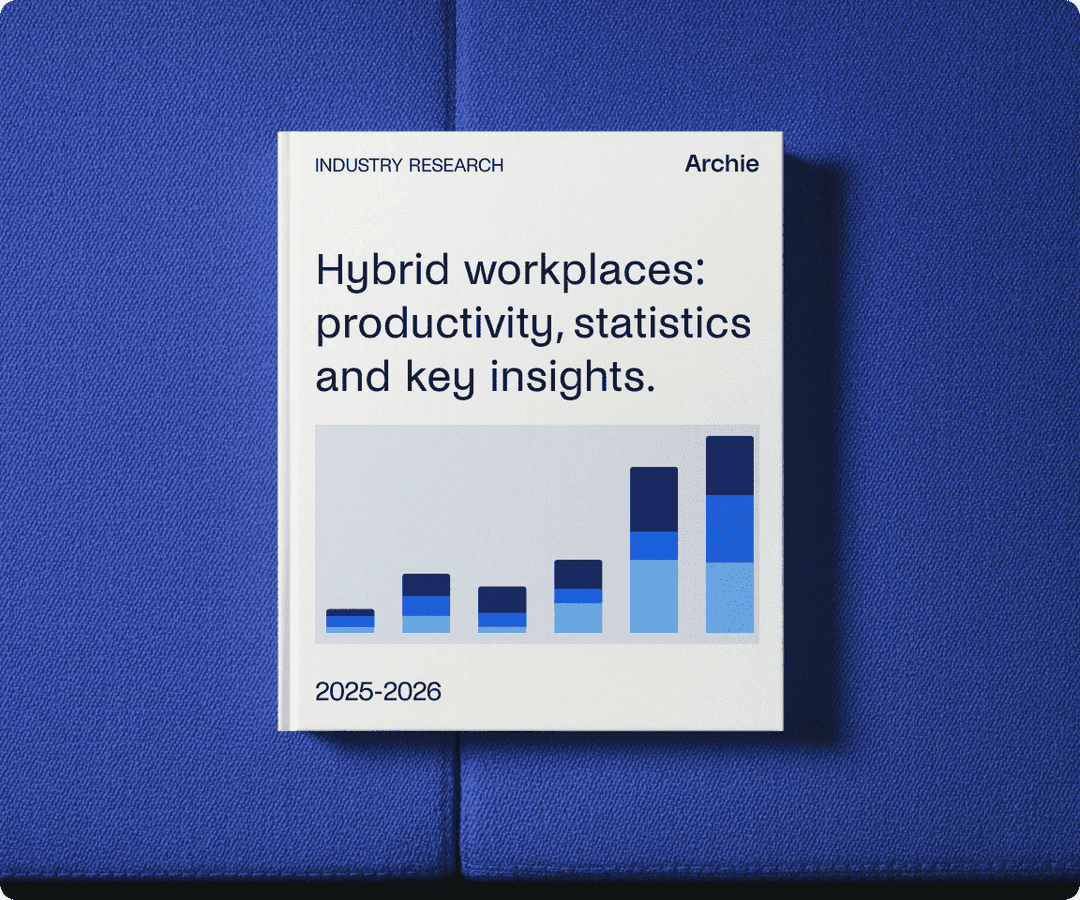


![The Latest Coworking Statistics & Industry Trends [2026] A cozy coworking space with wooden walls, warm lighting, and a large map of South America.](https://archieapp.co/blog/wp-content/uploads/2025/08/Latest-coworking-statistics-cover-image-400x400.jpg)
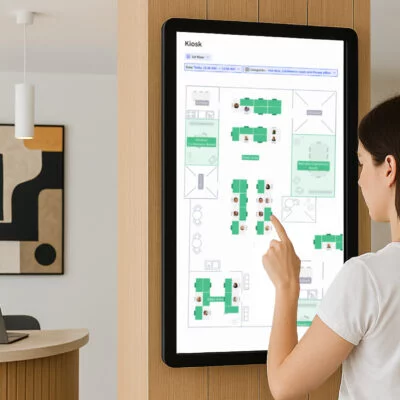
![RTO: Return-To-Office Statistics, Research & Trends [2026] Modern meeting room with large windows, a wooden conference table, pink chairs, and industrial-style ceiling lighting.](https://archieapp.co/blog/wp-content/uploads/2025/04/RTO-statistics-cover-image-400x400.png)
